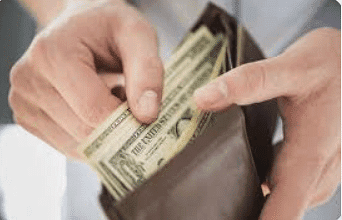Money | Year 2 Mathematics IGCSE (Cambridge) - Class 2 PDF Download
| Table of contents |

|
| Introduction to Money |

|
| Types of Money |

|
| Using Money |

|
| Saving Money |

|
| Counting Money |

|
Introduction to Money
Money is what we use to buy things we need or want. It can be coins, paper bills, or even numbers in a bank account. Money helps us trade for things like food, toys, clothes, and books.
Types of Money
- Coins: Small, round pieces of metal. They come in different sizes and colors. For example, pennies, nickels, dimes, and quarters.
- Paper Bills: Flat pieces of paper that have different values. For example, $1, $5, $10, and $20 bills.

Using Money
When we want to buy something, we give the shopkeeper money. The shopkeeper tells us how much we need to pay. We count our money to make sure we have enough. If we give too much, the shopkeeper gives us change.
Examples
- Buying a Toy: If a toy costs $5 and you have a $10 bill, you give the shopkeeper the $10 bill. The shopkeeper gives you the toy and $5 back as change.
- Buying Snacks: If a snack costs 50 cents and you have a quarter (25 cents), you need two quarters to buy the snack.
Saving Money
Sometimes, we don't spend all our money. We can save it for later. We can keep our money in a piggy bank or a bank account. Saving money helps us buy bigger things in the future.
Examples
- Saving for a Bike: If you want a bike that costs $100, you can save a little bit of money each week until you have enough to buy the bike.
- Saving for a Book: If a book costs $10 and you save $2 every week, after 5 weeks you will have $10 to buy the book.
Counting Money
Learning to count money is important. We can count coins and bills to see how much money we have. We can also add coins together to make the right amount.
Examples
Counting Coins: If you have 3 quarters, 2 dimes, and 1 nickel, you can count like this:
3 quarters = 75 cents
2 dimes = 20 cents
1 nickel = 5 cents
Total = 75 + 20 + 5 = 100 cents or $1
|
10 videos|45 docs|12 tests
|




















